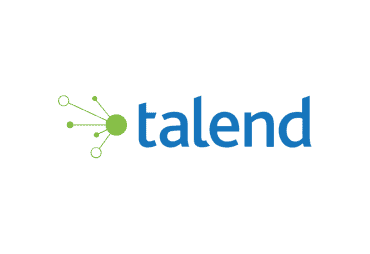
Bad data holds businesses back, costing millions and hindering decision-making power. As such, it’s time to prioritize master data management (MDM).
Bad data is shockingly prevalent and expensive. According to Gartner, “bad data” — i.e., data that is outdated, misfiled, duplicative, incorrect, or unnecessary — costs organizations about $12.9 million annually. Poor-quality data also harms an organization’s ability to compete. Without a comprehensive data intelligence program, leaders must make decisions based on intuition (or, worse, inaccurate information), leading to missed opportunities.
Best-in-class data leaders have challenged this problematic status quo by adopting master data management (MDM) platforms. These solutions collect, categorize, enrich, and validate data from disparate systems to create enterprise-wide business intelligence. Industry research suggests that MDM solutions can boast an ROI of over 350%.
Yet, despite its transformative potential, MDM adoption continues to face resistance from C-suite executives. Some business leaders perceive MDM solutions as complex and costly. Meanwhile, legacy data silos are so thoroughly entrenched that other executives may fail to see the potential of data clarity.
CIOs and other data leaders must bridge the knowledge gap among senior-level stakeholders to increase buy-in throughout the business. Let’s discuss three promising approaches for doing so.
See also: Blockchain for Master Data Management
1. Create a stronger relationship with your line of business
What business outcome are you attempting to achieve through MDM adoption? Articulating the answer to this question — and sharing it with senior-level stakeholders — is the first step to a successful data cleansing and management program.
All too often, data stewards and architects stumble during master data management adoption because they’re misaligned with the business side of the house. Either (1) operations directors and financial leaders don’t understand the ROI of data stewardship, or (2) data leaders cannot draw a line between their efforts and company objectives (or both). Regardless, misalignment hinders the initiation of MDM adoption, much less MDM success. To bridge the gap, data leaders must establish a strong working relationship between their department and strategy professionals.
Data practitioners should immerse themselves in their organization’s strategic goals. Although primary KPIs — revenue generation and building pipeline, for example — are likely obvious, more nuanced understandings of current objectives will spawn a more tailored approach to data collection and validation. Perhaps your organization aims to increase brand awareness among a particular ideal customer profile (ICP) this quarter. A thorough MDM strategy could help achieve this goal by isolating data about former marketing campaigns. What advertisements performed well with which segment, and which may need to be shelved or tweaked? Data is the key to answering questions like this.
Furthermore, consider involving C-suite executives in the planning phase of MDM. When MDM partners discuss the benefits of data platforms within the context of your organization’s goals, executives can more easily understand upfront ROI. Additionally, by inviting all stakeholders to the MDM table, you unlock far more actionable and business-driven goals once you initiate a pilot project. Consider using an MDM ROI calculator or proof of value discussion to provide a blueprint for success and jumpstart this conversation with executives.
2. Start small, grow quickly
Many CIOs feel data management is undervalued in their organization. However, when strategy and operations leaders understand MDM’s capabilities, the opposite problem often emerges: sky-high expectations and insufficient follow-through.
The problem with overzealous MDM implementation is that business objectives can change quickly. If data management success becomes entwined with far-reaching KPIs that span multiple departments, the program may fall short of expected results. MDM programs see greater success through small initial pilot applications that, once matured, act as a guide for larger-scale rollouts.
Let’s break this down using an example. Say a popular fast-food chain with global locations seeks to capitalize on the immense amount of data it collects. This company ingests plenty of actionable data, including menu item popularity, ingredient provenance, and compliance requirements per location. However, the company chooses to focus on a single use case initially: location management. After getting a handle on its locations, the company uses the same MDM platform to understand, process, and organize its other vast data stores. Thanks to the pilot program, the company’s data leaders prove the value of MDM in a controlled setting, clearing a path for broader inter-departmental initiatives.
Smaller initial applications of MDM serve a dual purpose. One, they provide an example of MDM success that C-suite executives can interrogate and understand. And two, they create a low-risk pilot phase that will appeal to risk-averse executives. Leading MDM providers will partner with you beyond the implementation phase to ensure initial success prevails throughout your data journey.
3. Draft a unique implementation plan
No two organizations have the same data requirements, so no two MDM blueprints should look identical. MDM solutions attempting to “plug and play” with your existing systems are bound to fail. Moreover, generic MDM pitches impede the path to achieving buy-in. C-suite executives want personalized solutions that address current objectives.
CIOs must demonstrate the value of MDM by drafting a customized and realistic implementation plan with their third-party partner. Implementation plans should outline your organization’s MDM journey from data status to pilot projects and full-scale deployment. During this planning phase, it’s beneficial to map out existing issues with data management, including data silos. By reviewing these areas of improvement with senior leadership, data leaders can ensure all stakeholders understand the problem MDM will help to solve. Remember, data leaders don’t need to take this step alone — MDM partners can provide rapid delivery blueprints that outline best practices for rollout.
Finally, engaging with the C-suite to review and refine this plan ensures that top-level stakeholders know the project’s scope, timeline, and resource requirements, thereby improving its chance of success.
Now is the time to prioritize MDM adoption
MDM deployment is complicated — increasingly so. Global data generation is skyrocketing, with Statista estimating annual data creation will reach 180 zettabytes by 2025. (That’s up from 64.2 zettabytes annually in 2020 — a 280% increase in five years.) Additionally, organizations are adopting more disparate tools than ever. The average organization uses 130 different SaaS applications as of 2022. Each of these applications generates a massive amount of data.
Data hygiene is difficult to practice amidst this level of data generation and consumption. But the evidence is clear: Bad data holds businesses back, costing millions and hindering decision-making power. It’s time to bridge the knowledge gap and move the needle by facilitating executive buy-in and adopting MDM.





























